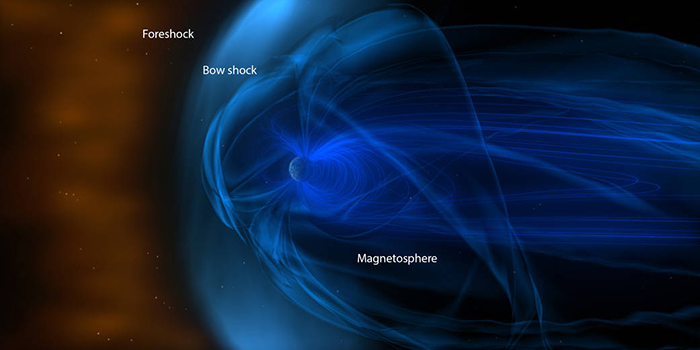Important upgrade to Geoscience Australia's magnetometer calibration facility
4 July 2016
Why is there life on Earth? We owe this phenomenon greatly to the Earth's magnetic field. This invisible force protects the planet from harmful cosmic radiation and charged particles that radiate from the sun in the form of solar winds and geomagnetic storms. Although our magnetic field protects us from these space storms, this space weather can still impact Earth's magnetic environment.
During geomagnetic storms, electric currents flow in the Earth's magnetosphere and ionosphere. While the storms can create beautiful auroras, they also can disrupt navigation systems such as GPS and compass readings, cause disruptions in radio broadcasts and interrupt geophysical surveys for mineral exploration. More significantly, these space storms can also create damaging geomagnetic induced currents in electrical powerlines as well as along gas, oil and water pipelines.

The Earth is surrounded by a giant magnetic bubble called the magnetosphere. Credit: NASA/GSFC.
But how do we monitor this invisible force across our continent? Geoscience Australia operates a network of magnetic observatories across Australia and the Australian Antarctic Territory. Highly accurate instruments called magnetometers measure magnetic fields at these observatories.
Data measured at these observatories show how the Earth's magnetic field changes in the Australian region due to processes taking place beneath the Earth's surface, in the upper atmosphere and in space. Geoscience Australia's observatories form part of a global observatory network, in partnership with government and industry organisations worldwide. Geoscience Australia plays a leading role in Australia by setting industry standards and providing quality assurance in this field.
Magnetometers must be calibrated correctly, to guarantee accuracy of these precise measurements. This ensures subtle but important features of the geomagnetic field can be monitored - such as abnormalities in the Earth's magnetic field strength, or the slow drift of the magnetic field due to processes in the Earth's outer core.
In order to ensure accurate magnetometers, Geoscience Australia has operated a Magnetometer Calibration Facility just outside Canberra since 2000. In addition to magnetometer calibrations Geoscience Australia also provides a service to compare magnetic compasses to observatory standards to determine required instrument corrections.
This service is often used by the aeronautical industry. The compass calibrations and the Magnetometer Calibration Facility both form an essential service to calibrate magnetic instrumentation not only used by Geoscience Australia, but also by Australian Government departments, universities and industry organisations.
Geoscience Australia has just completed upgrading the 16 year old facility, by developing new software and installing new equipment that improves magnetometer calibration accuracy and overall system reliability. Improving the accuracy of measurement standards and techniques is essential for advances in technology and products in this scientific field.
This calibration facility saves defence, Australian Government and geoscientific communities the complicated and expensive processes of sending its instruments overseas for calibration. This facility is one of only a few high quality magnetometer calibration facilities found in the world, and Australia benefits from having this world-class facility available to magnetometer users.
Further information:




